
Conifer Identification
| QUICK LINKS: | |||
Abies = true firs
|
Pinus = pines
|
Taxonomy
Conifers are Gymnosperms of the Family Pinaceae, and the Division Pinophyta. They are defined as having "naked seeds", referring to the fact that conifer seeds are not contained within fruit tissue. The seeds are instead borne on scales, which are grouped together to form cones. Most conifers have persistent foliage (evergreen) consisting of needles or scales.
| Taxonomic family | Common name | Species | Local Species |
|---|---|---|---|
| Pinaceae | Pine family | 342 | pines, spruces, firs ... |
| Cupressaceae | Cypress family | 186 | Leyland Cypress, ... |
| Podocarpaceae | Podocarpus family | 182 | no local species |
| Araucariaceae | Araucaria family | 39 | Monkey-puzzle tree |
| Taxaceae | Yew family | 28 | yews |
| Cephalotaxaceae | Plum yew family | 11 | no local species |
| Phyllocladaceae | Celery Pines | 5 | no local species |
| Sciadopityaceae | Umbrella Pine family | 1 | Umbrella Pine |
Conifer Key 1: What kind of Conifer?
In this discussion I will be discribing both trees native to Vancouver Island and exotic species that have been planted on Vancouver Island. Additional details and characteristic features will be provided in later sections covering the individual genera and species. Refer to dichotomous Key 1.
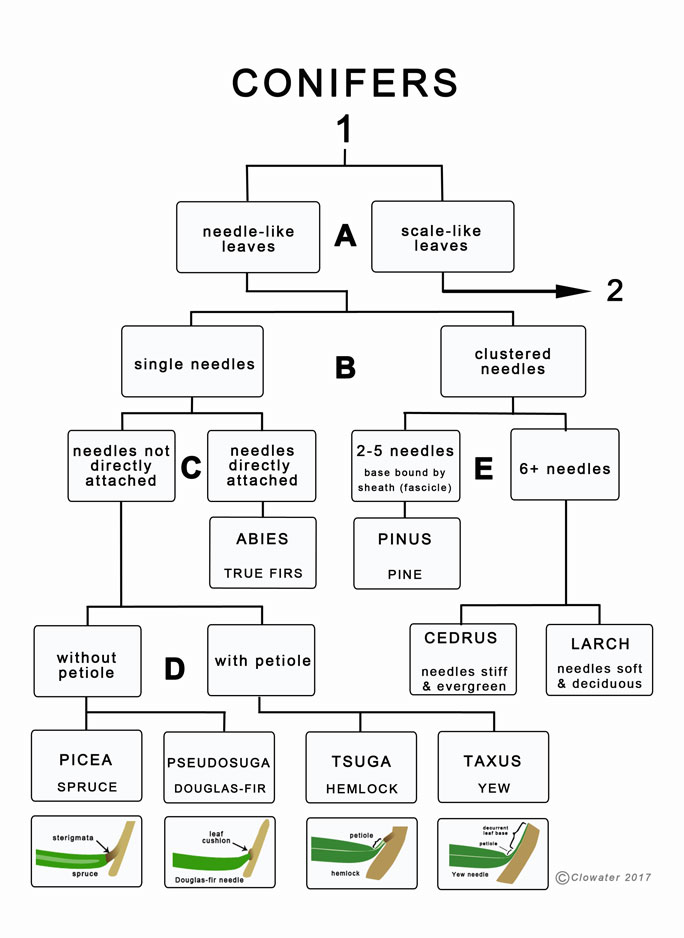
A. The first step in identification is to determine the Genus of the species examined. To do this, examine the leaves first. Are the leaves needle-like (fig. 1) or scale-like (fig.2).
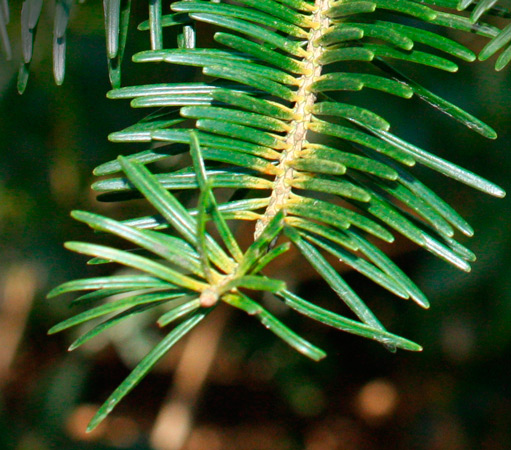
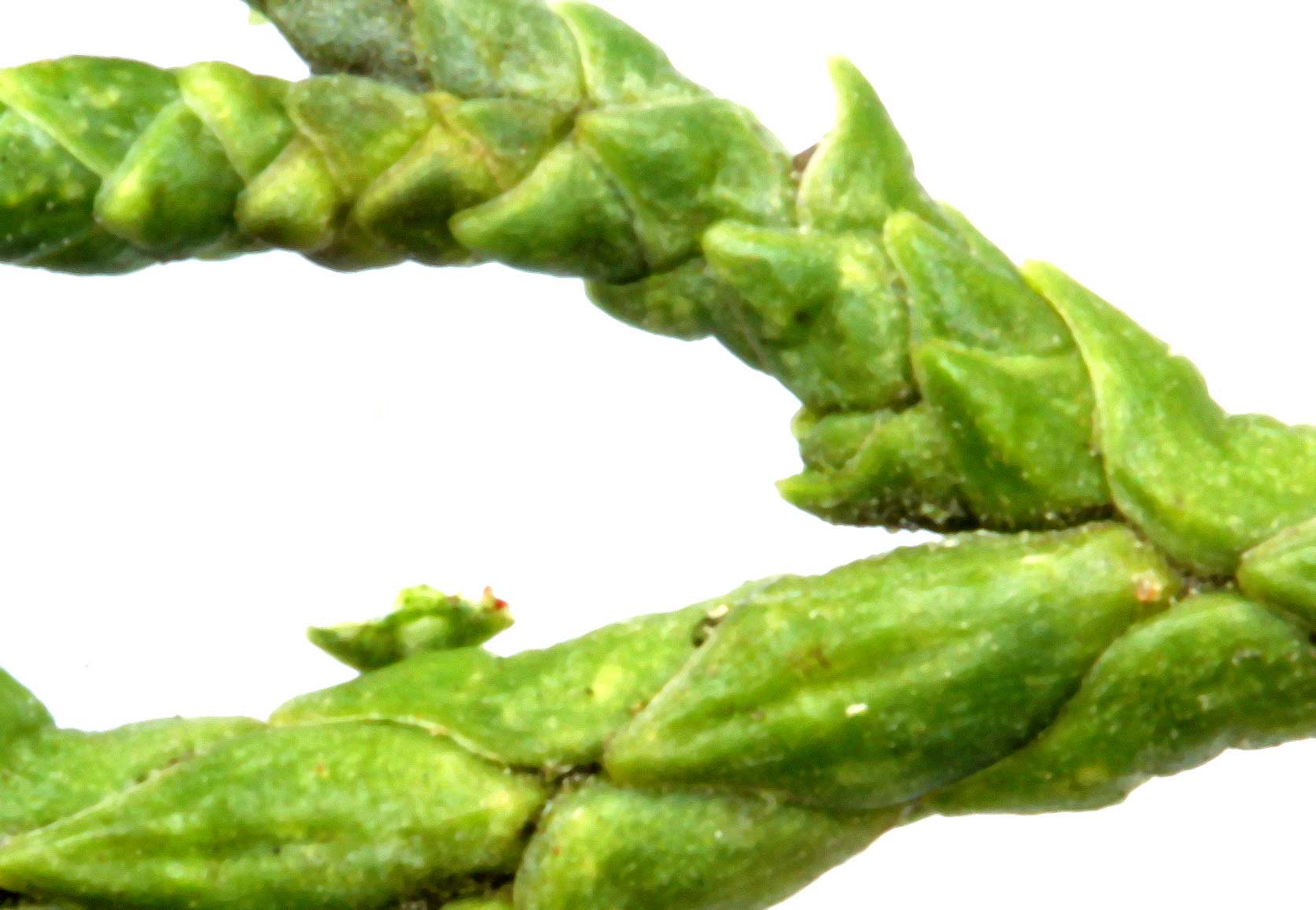
Conifers with needle-like leaves
B. Next we examine how the needle attaches to the branchlet. Are single needles attached directly to the branchlet (fig.1) or are they attached in clusters (fig.3)?
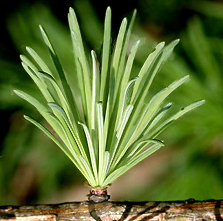
Needle attachment
C. The next character to examine is how the needles are attached to the branchlet. Are they attached directly to the branchlet (fig. 6) or indirectly by way of an intermediate structure like the peg-like sterigmata shown in Figure 4 and Figure 5?
Conifers that have needles that are directly attached to the branchlet with a suction-cup-like bases are in the Genus Abies, true firs.
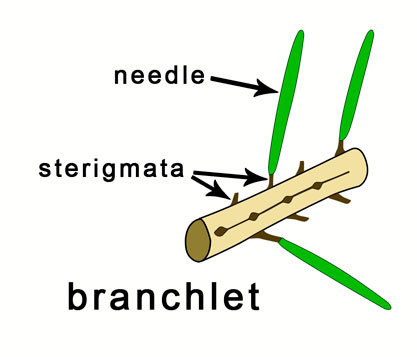
Conifers that have needles that are not attached directly to the branchlet, may be spruce, hemlock, yew, or Douglas-fir. Among these genera the spruces (Picea) have the most easily observed defining characteristic, the sterigmata. These structures can also be seen when the needles have fallen off the branches leaving the peg-like sterigmata that roughen the surface (fig.5).
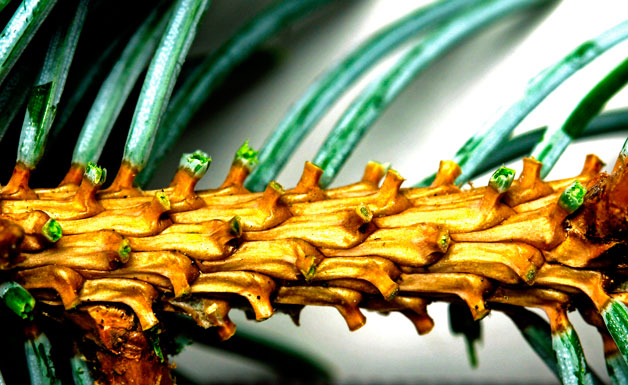
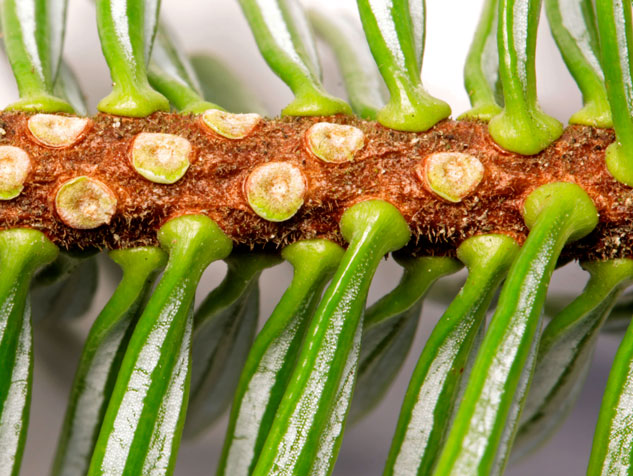
With or without petiole
D. To determine difference between spruce and the others, we must look at the structure of the leaf. The petiole (stem) is a structure in many leaves that attaches the leaf to the branchlet. The conifers that do not have a petiole are the spruces and the Douglas-fir. Spruces have woody sterigmatas that protube from the branchlets and connect to the needles (fig. 5). In the Douglas-fir (Pseudotsuga menziesii) the needle attaches to a swollen structure (cushion) on the branchlet (fig. 7).
The hemlocks and yews have a petiole that is intermediate between the leaf and the branchlet. In the hemlocks the needles narrow to form a petiole before joining the branchlet (fig. 8). In yews the petiole attaches to the branchlet decurrently, the leaf tissue connects to the branchlet and runs along the branchlet surface for some distance (fig. 9).
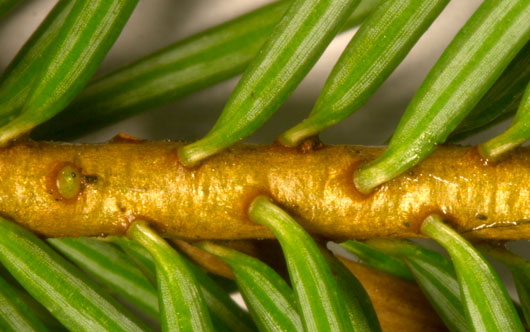
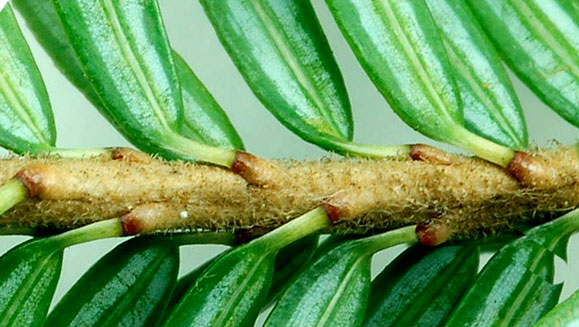
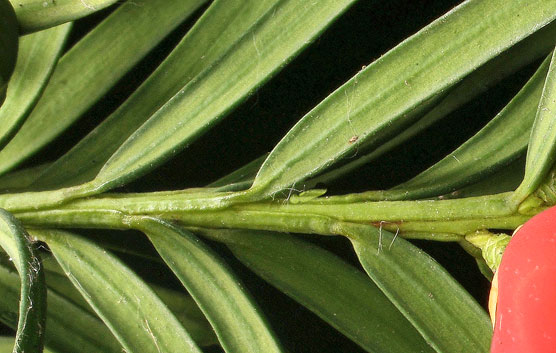
Conifers with clustered needles
B.- E. Among conifers that have clusters of needles, those with 2-5 needles (fig. 10) in a cluster and that are bound together with a fascicle (fig. 11) are in the Genus Pinus.
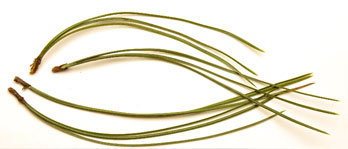
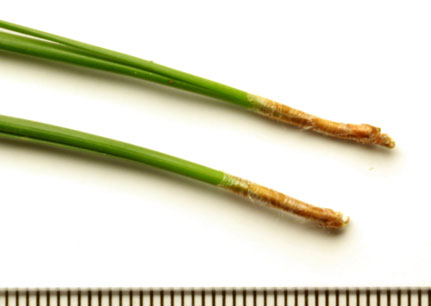
Conifers with a clusters of more than 6 needles (fig. 3) could be either true cedars, genus Cedrus, or larch, genus Larix. Those of genus Larix have soft deciduous needles and small cones that can either hang or be upright, while Cedrus species have stiff evergreen needles and rotund upright cones.
Identification of Abies Species: Introduction
This section will cover the identification of true firs, Abies genus. The identification of exotic firs presents some challenges. On Vancouver Island there are only three species of true firs, Abies grandis (Grand fir), Abies amabilis (Amabilis fir) and Abies lasiocarpa (Subalpine fir). If we include exotic firs planted on Southern Vancouver Island, there are more than seventeen species of true firs. Creating an identification guide for exotic species is challenging because we have very few examples of each species, (sometimes incorrectly identified) and the published literature is often inconsistent.
In order to create consistent identifications, each tree was located, measured, and characteristics were recorded and photographed. In this way, as we encounter more species, we contribute to a database of characteristics that should eventually build consensus. This identification guide only includes species that I have encountered on Vancouver Island. The following table lists the characteristics sampled in order to create this guide.
| 1. needle length (n=30) | 9. mature female cone colour |
| 2. needle tip shape | 10. cone bract exsertion |
| 3. needle groove and midrib occurrence | 11. male cone colour |
| 4. number of stomatal lines on lower needle surface | 12. new branchlet colour |
| 5. occurrence of stomata on upper needle surface | 13. new branchlet surface texture |
| 6. foliage arrangement on branchlet | 14. occurrence of hairs on branchlet |
| 7. winter bud morphology | 15. position of resin canals in needle |
| 8. young female cone colour | 16. bark colour and form |
Abies: Identification
I have attempted to use characteristics that can be seen without the use of a microscope, however I am compelled to avoid easily visible ones like needle tip shape, when those are inconsistent on a given species. Unfortunately to separate some species, I will need to refer to traits that are less easily seen, such as position of the resin canals in a needle cross-section. In some instances the colour and morphology of the female cones are needed to determine identity, so observations of trees may need to be done when these structures are mature, and since in most firs the cones are at the top of the trees, binoculars or a telephoto lens may be required. Refer to the dichotomous Abies Key A for this discussion.
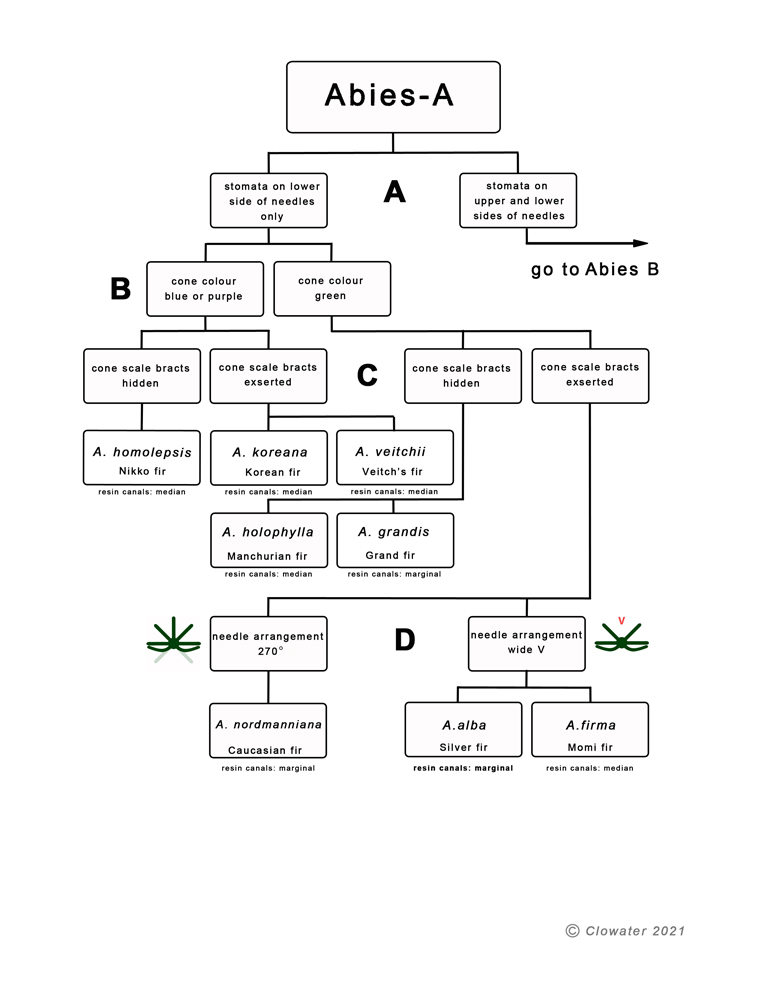
Location of stomata
A. One of the most useful characteristics to examine when identifying firs is whether there are stomata on the upper side of the needles. Stomata are the microscopic structures in plant leaves that allow gas exchange by opening and closing as required. In most species there is a white waxy bloom that surrounds the openings of stomata that assists in waterproofing and makes the stomata easily visible as lines of white dots. All firs have stomata on the underside of the needles (fig. 12). Some firs have stomata on the upper side of the needle as well (fig. 13). Examine the fir needles through a magnifier to determine whether there are stomata on the upper side of the needles.
Colour of mature female cones
B. True fir cones do not fall to the ground when they are mature; they disintegrate releasing their seeds while still on the branch, leaving only the central spike. In addition, most fir cones are high up in the top of the tree, making examination of them more difficult. After fertilization, the young female cones swell and develop into mature cones and then turn brown and disintegrate. The mature cone colour is a good diagnostic feature. Some mature cones are purple (fig. 14) and some are green (fig. 15).
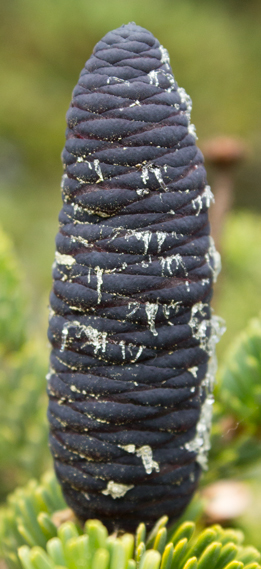
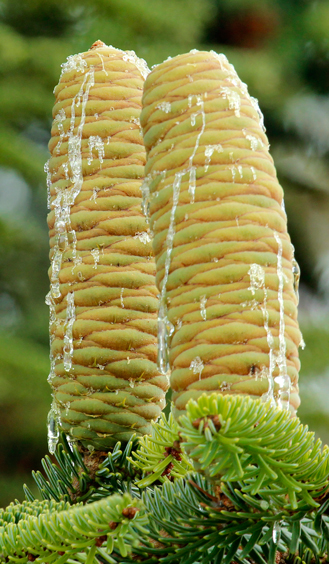
Cone scale bracts exsertion
C. The developing female cone contains the seeds layered between the cone scales. The cone scales have bracts that may be exserted (showing) between the scales (fig. 16) or hidden (fig. 15) depending on the species. These are best evaluated on the mature cone.
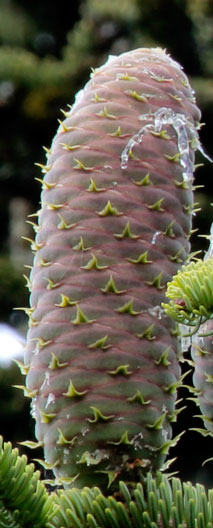
Needle arrangement
D. The arrangement of the needles around the branchlets can be helpful in determining identification. A branchlet that has needles arrange in mostly one plane is called "pectinate" (comb-like). If the needles are distributed evenly around the twig (360°) it is referred to as "bristle brush" (Table 3). Other species may have the needles that appear to be distributed over the 270° of the branchlet cross-section. Some species have shorter needles on the upper side of the branchlet and these may be parted to form either a narrow or wide V.
| Degrees | Name | Symbol | Image | Species |
|---|---|---|---|---|
| 180° | pectinate |  |
Abies grandis | |
| 270° | 270 | 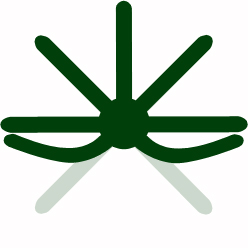 |
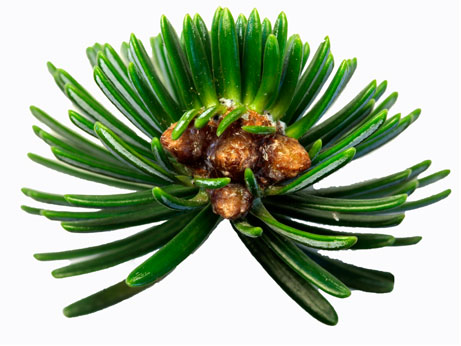 |
Abies nordmanniana |
| 270° | V | 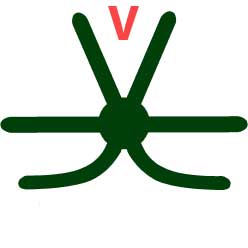 |
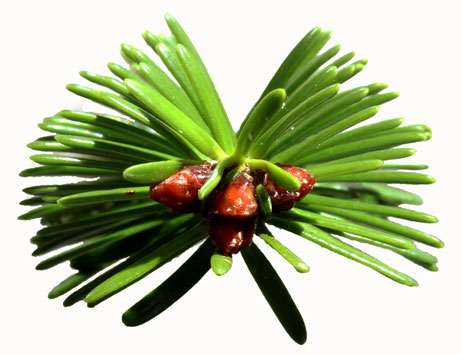 |
Abies numidica |
| 360° | bristle brush |  |
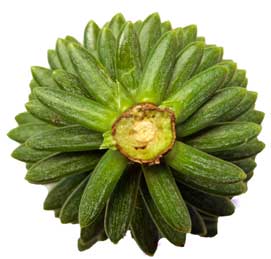 |
Abies pinsapo |
Abies: Identification continued
To continue from key Abies A, we look at species that have stomata on both the upper and lower surfaces of the needles (A-Abies B). Some species have either blue/purple cones and others have green mature cones (B). Among the species with blue/purple cones, there are those which also have exserted cone scale bracts (C). There are only two species that conform to these characteristics (in our study area), the Fraser Fir (Abies fraseri) and the Noble Fir (Abies procera). These can be separated by needle length, but The Noble fir also has a unique feature we can look for. The needles bend parallel to the branchlet before they join forming a shape that looks like a hockey stick (Fig. 17).
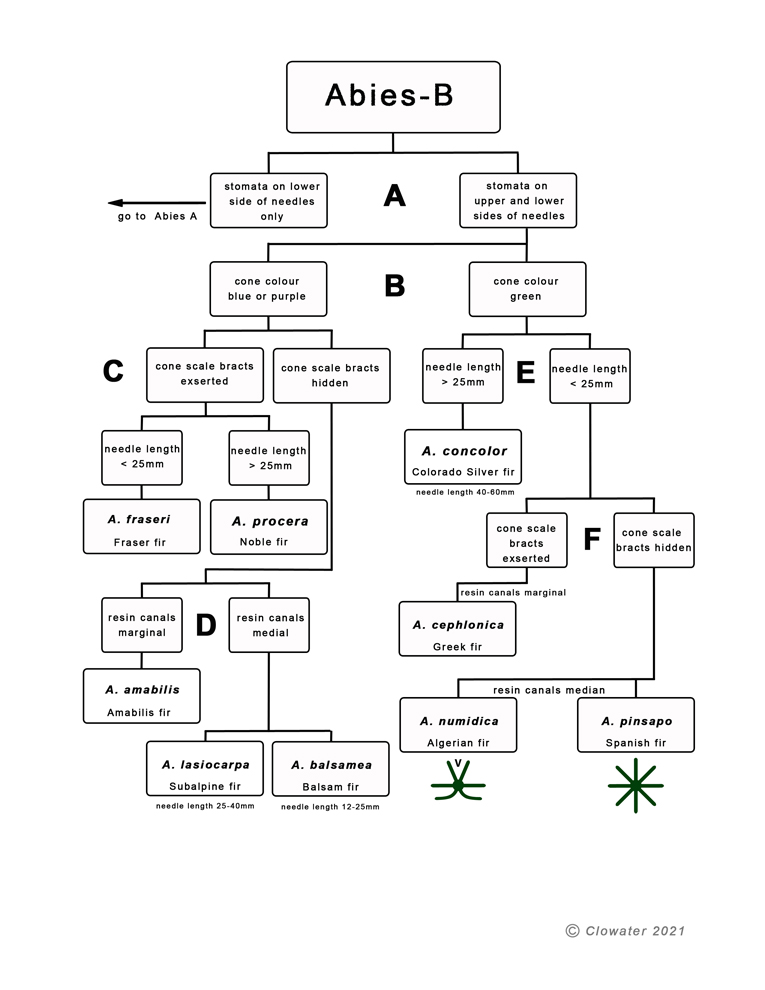
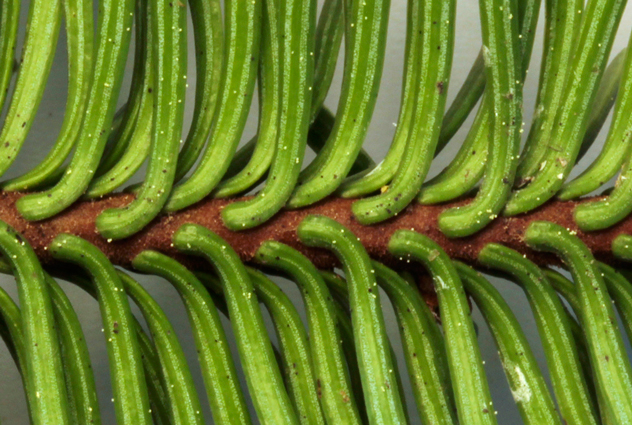
Resin canal location
D. The position of the resin canals in the needles of firs is a useful characteristic for identification. In some species there can be variation in their position between needles on fertile and nonfertile branches. Our sampling was confined to the lower easily accessible non-fertile branches. Resin canals can be either median or marginal in position (Fig. 18, Fig. 19)
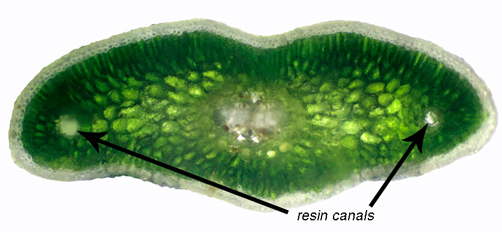
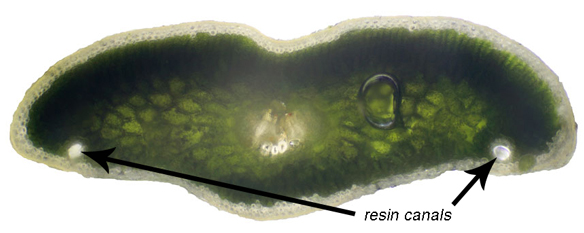
E. Returning to Abies species with green mature female cones (B), we look at species that have needles that are longer than 25mm. Abies concolor is an easily recognizable species. Its foliage has a very gray-green appearance due to the abundance of white stomatal lines on the upper and lower sides of the needles and its foliage has a sparse and mostly pectinate (comb-like) arrangement on the branchlets.
F. Among the species with needle lengths less than 25mm, Abies cephlonica has female cones with exserted bracts (Fig. 16) and marginal resin canals (Fig. 18).
The two species with needle lengths of less than 25mm, cones with hidden bracts, and median resin canals are the Algerian fir (Abies numidica) and the Spanish fir (Abies pinsapo). These two species can appear alike, but the Spanish fir has very short needles (8-20mm) and a 360° (bristle brush) needle arrangement on the branchlets (Table3), while the Algerian fir has a needle length of 15-25mm and a 270° needle distribution. (Table 3)

